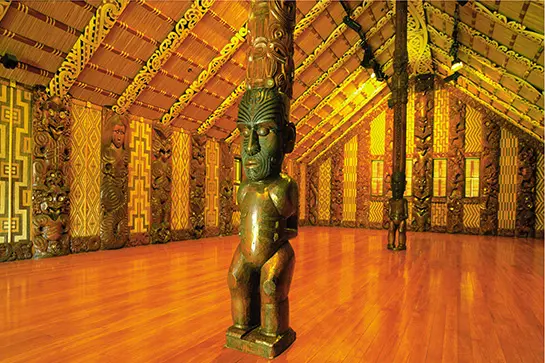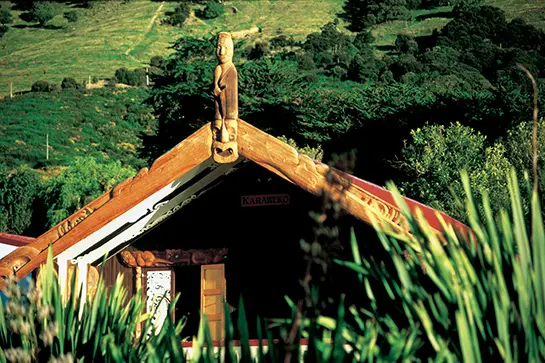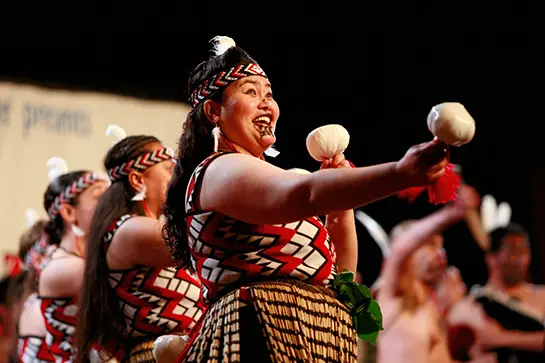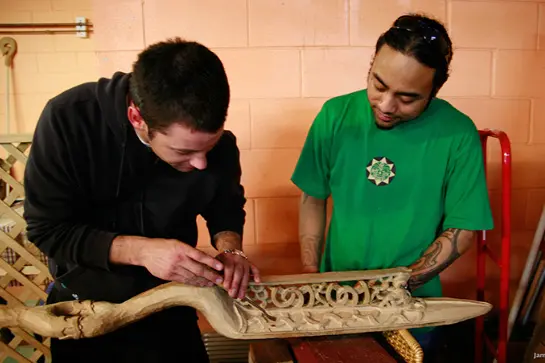Maori Settlement
The first to arrive in Aoteroa, New Zealand were ancestors of Maori, the settlers most likely arrived from Polynesia, somewhere between 1200 and 1300 AD.
The discovery of New Zealand came about as they explored the Pacific, whilst navigating the winds and ocean currents and of course the stars in the night sky above.
Kupe is the navigator who is credited by some tradition to have discovered New Zealand.
The First Europeans
The Dutch - The first European to arrive in New Zealand was a Dutchman by the name of: Abel Tasman. He arrived in 1642 and called this place Nieuw Zeeland.
This is how today we have the name New Zealand and today the Region of Nelson, located in the top left of our South Island, today Nelson and surrounding beauty is Loved for its beautiful golden sand beach, the town of Kaiteriteri is the launching pad for trips into the Abel Tasman National Park, named after the Great Explorer. This is New Zealand’s only coastal national park, and its golden sandy beaches & clear turquoise waters make it one of the most popular. The sheltered bays are popular for sailing & kayaking. On land, the Abel Tasman Coast Track follows the coastline through lush native bush, over limestone cliffs & golden sandy beaches. This is regarded as one of New Zealand’s “Great Walks”. The 53 km track can be fairly easily walked & kayaked over a period of 3-5 days, or shorter visits can be made by water taxi. The Tonga Island Marine Reserve is home to NZ fur seals.
The British and the French
It is surprising how long the time passed, before, some 127 Years before Captain Cool arrived in 1769 and was the first of three visits he made. Following came the Sealers and the Whalers who visited on a regular basis and soon were followed by Traders.
It was in the 1830s that the British Government were being pressurized to attend to the unlawful behavior and to curb lawlessness in New Zealand, who acted quickly to also pre-empt the French who did consider New Zealand perfect for a potential colony.
Tuia – Encounters 250 Commemoration – Te Pōwhiri Te Whanganui o Hei
In early November 1769, HM Bark Endeavor sailed into the waters of Te Whanganui o Hei/Mercury Bay and anchored at the mouth of the Purangi River, “as unexpected as a spaceship landing in your backyard” comments Joe Davis, kaumatua and spokesperson for tangata whenua Ngāti Hei and co-chair of Mercury 250 Trust. At the recommendation of Toawaka, the venerated Ngāti Hei rangatira/chief of that time, tangata whenua welcomed the newcomers ashore at Wharekaho (just north of Whitianga on the Coromandel Peninsula) and guaranteed their safe passage along the foreshore of the beach to the marae, Wharetaewa Pa. There, Ngāti Hei honoured Lieutenant James Cook, Tupaia (a Polynesian linguist and priest) and the scientists and crew on-board the Endeavour with a Pōwhiri – a ritual of welcome and inclusion. It is thought this was the earliest European experience of the culturally rich ceremony. During the 12 days the Europeans were at anchor in Te Whanganui o Hei, Cook and scientist Green observed the transit of Mercury, allowing them to accurately establish longitude on the globe.
On 18 October 2019, the Tuia 250 Flotilla of six waka hourua, va’a and tall ships will sail into the waters of Te Whanganui o Hei, marking 250 years since that first arrival. The Tuia Flotilla will visit all four of the original sites around Aotearoa/New Zealand, marking the first on-shore meetings between tangata whenua and Cook, Tupaia, and the scientists and crew on board HM Bark Endeavour.
Alongside Te Whanganui o Hei, these sites are Tūranga-a-Kiwa | Gisborne, Te Tai Tokerau | Northland and Totaranui |Marlborough Sounds, and the communities of each region are developing events, activities and also what is known as 'Legacy Projects' which all reflect the kaupapa | objectives of Tuia 250, to tell their unique stories. Mercury 250 Trust has been formed to oversee ceremonies, events and projects in Te Whanganui o Hei to honour this important moment when Aotearoa’s bi-culture began.
During the three days the Tuia 250 Flotilla is in Te Whanganui o Hei, a Powhiri will again take place at Wharekaho to commemorate that first amicable encounter between Māori and Pākeha 250 years ago, welcoming manuhiri/guests from the vessels, dignitaries and the community.
Te Pōwhiri honours New Zealand’s biculturalism and acknowledges its multi-cultural communities. “It is an opportunity for our cultures to share our stories with balance and honesty, to bring about understanding, respect, reconciliation. It is an invitation to our nation, to all of us, to make the decision to create the future we want” explains Paul Kelly, chair of Mercury 250 Anniversary Trust. Joe Davis adds “It is an opportunity to tell our Ngāti Hei stories, to let our community and the world know our diverse history.”
In the same spirit of welcome, today the people of Te Whanganui o Hei regularly include thousands of newcomers, visitors, and holidaymakers into their community. Join us, as we recognise and celebrate the weaving together of the many threads of the cultures of Te Whanganui o Hei and Aotearoa.
Tuia 250 Celebrated that Together we build a strong foundation for a shared future – Tuia i te muka tangata.hared future – Tuia i te muka tangata.
Read more about Tuia 250.







